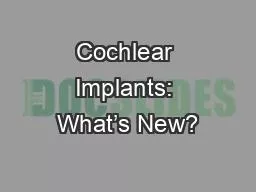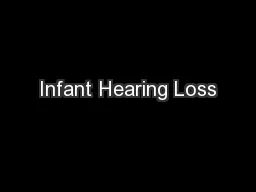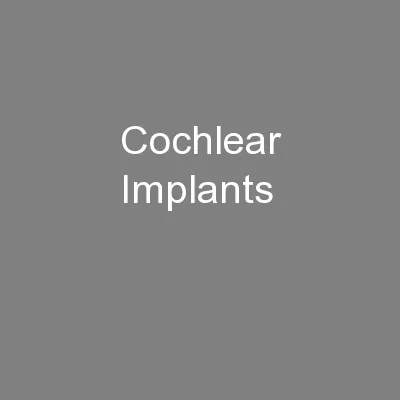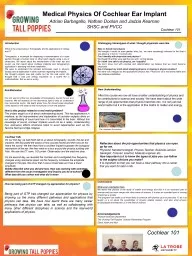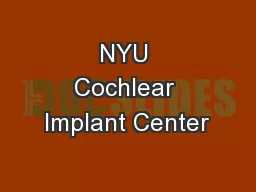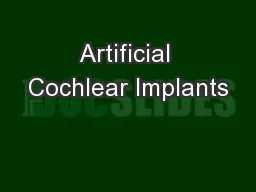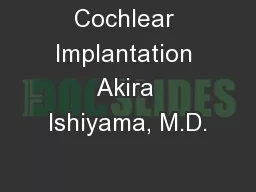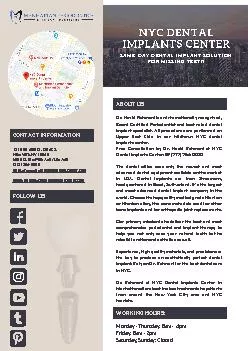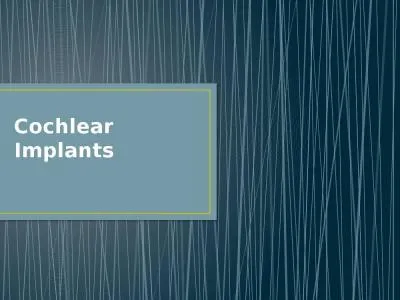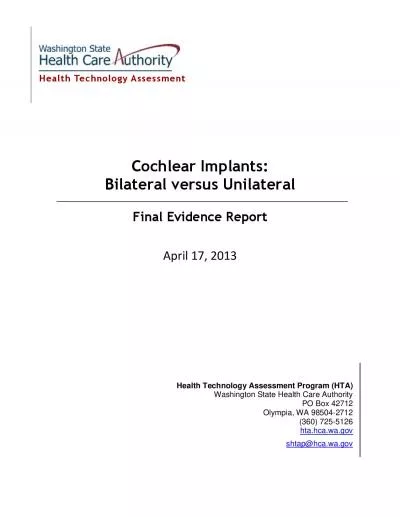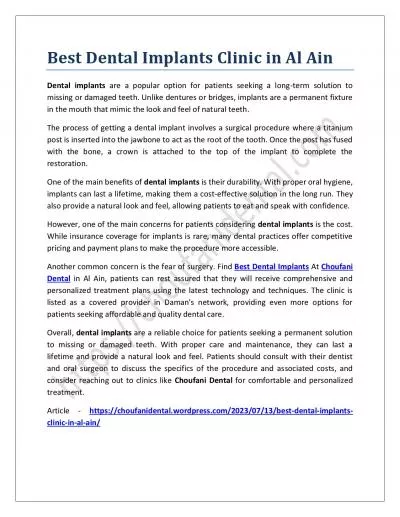PPT-Cochlear Implants: What’s New?
Author : eatsui | Published Date : 2020-07-04
Kyle Allen MD MPH Tampa Bay Hearing and Balance Center November 9 2018 Florida Combined Otolaryngology Meeting Disclosures Med El Surgical Advisory Board Advanced
Presentation Embed Code
Download Presentation
Download Presentation The PPT/PDF document "Cochlear Implants: What’s New?" is the property of its rightful owner. Permission is granted to download and print the materials on this website for personal, non-commercial use only, and to display it on your personal computer provided you do not modify the materials and that you retain all copyright notices contained in the materials. By downloading content from our website, you accept the terms of this agreement.
Cochlear Implants: What’s New?: Transcript
Download Rules Of Document
"Cochlear Implants: What’s New?"The content belongs to its owner. You may download and print it for personal use, without modification, and keep all copyright notices. By downloading, you agree to these terms.
Related Documents

